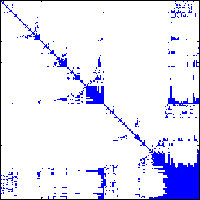 Jeff Hawkins of Palm fame shows up in the New York Times hawking his Grok for Big Data predictions. Interestingly, if one drills down into the details of Grok, we see once again that randomized sparse representations are the core of the system. That is, if we assign symbols random representational vectors that are sparse, we can sum the vectors for co-occurring symbols and, following J.R. Firth’s pithy “words shall be known by the company that they keep” start to develop a theory of meaning that would not offend Wittgenstein.
Jeff Hawkins of Palm fame shows up in the New York Times hawking his Grok for Big Data predictions. Interestingly, if one drills down into the details of Grok, we see once again that randomized sparse representations are the core of the system. That is, if we assign symbols random representational vectors that are sparse, we can sum the vectors for co-occurring symbols and, following J.R. Firth’s pithy “words shall be known by the company that they keep” start to develop a theory of meaning that would not offend Wittgenstein.
Is there anything new to Hawkins’ effort? For certain types of time-series prediction, the approach parallels artificial neural network designs, replacing the complexity of shifting, multi-epoch training regimens that, in effect, build the high-dimensional distances between co-occurring events by gradually moving time-correlated data together and uncorrelated data apart with an end-run around all the computational complexity. But then there is Random Indexing, which I’ve previously discussed, here. If one restricts Random Indexing to operating on temporal patterns, or on spatial patterns, then the results start to look like Numenta’s offering.
While there is a bit of opportunism in Hawkins latching onto Big Data to promote an application of methods he has been working on for years, there are very real opportunities for trying to mine leading indicators to help with everything from ecommerce to research and development. Many flowers will bloom, grok, die, and be reborn.… Read the rest